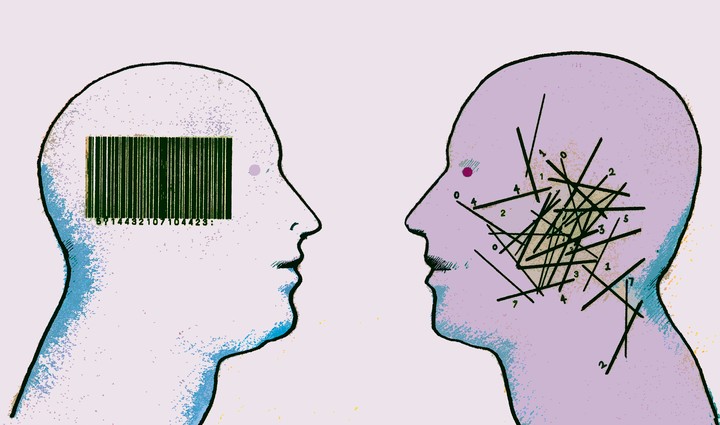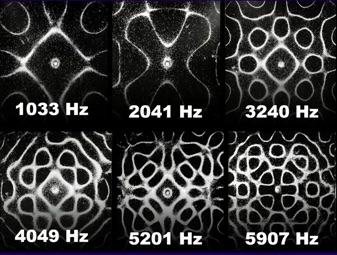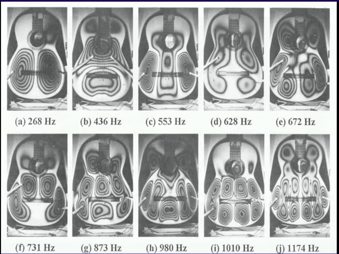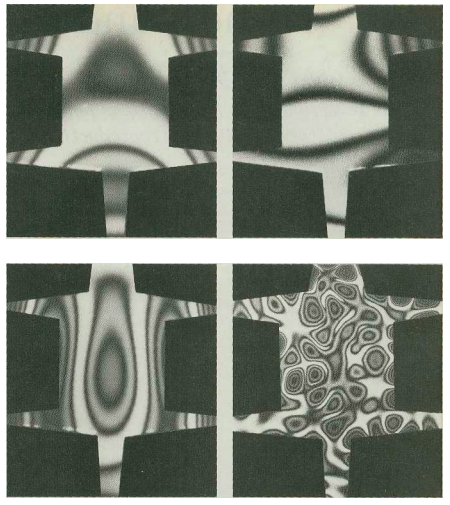LSD Brings Your Brain to the Edge of Chaos
This new LSD study is like an acid trip all on its own.

One Saturday in 1964, neurologist Oliver Sacks took a bit of amphetamines, LSD, a “touch” of cannabis, faced a white wall in his home, and said “I want to see indigo now—now!”
“And then,” he wrote in the New Yorker in 2012, “as if thrown by a giant paintbrush, there appeared a huge, trembling, pear-shaped blob of the purest indigo. Luminous, numinous, it filled me with rapture: it was the color of heaven, the color, I thought…I leaned toward it in a sort of ecstasy. And then it suddenly disappeared, leaving me with an overwhelming sense of loss and sadness that it had been snatched away. But I consoled myself: yes, indigo exists, and it can be conjured up in the brain.”
Sacks did not experiment with mind-altering drugs until he was 30 years old, but did so regularly afterwards, experiencing a wide variety of hallucinations that he said gave him more empathy for his patients with disordered brains.
There’s a long history of academics and scientists experimenting with hallucinogens, not to “tune in and drop out,” but to push the brain to its limits and, like Sacks, see what it was capable of. Sacks wrote that when he first began taking drugs, our understanding of how neurotransmitters and chemicals run the show (and therefore experience and behavior) was just emerging. It was leading to questions like: “Why was LSD so enormously potent? Were all its effects explicable in terms of altering the serotonin in the brain?”
We’ve come a long way in understanding the effects of LSD, especially as it becomes used more frequently in mainstream research. A study from 2016 used three types of imaging to show that LSD causes changes in brain blood flow, electrical activity, and creates a brain that is much more connected—meaning various brain regions have more communication among them—than brains in the placebo group. The paper included striking images that showed brains on LSD ablaze with activity and connection compared to brains without it.
But there’s still much to be uncovered about the exact neurobiology of when a brain is on LSD, and what we can infer about the normal brain from it. A recent study published in Scientific Reports sought to do just that. An international team used a new kind of imaging that uses the literal shape of the brain itself to interpret the brain’s activity during LSD. What they found is that on LSD, the brain expands its behavior and connections in ways we didn’t know of before; it brings our brains right to the edge of chaotic behavior, without allowing us to topple over it.
The findings also point to potential explanations as to why hallucinogens are helpful in treating conditions like depression, and offer proof of a basic principle of chaos and order that exists in all of our brains, whether on LSD or not.
When I spoke to the first author of the paper, Selen Atasoy, a postdoctoral researcher at Oxford University, she said that before she explained any of that, we would need to take a step backwards. I discovered that the new method she’s using to read the brain is a head trip all on its own, and to explain it, we have to go back in time more than 200 years.
In the late 18th century a German acoustic scientist named Ernst Chladni put sand on metal plates, ran the bow of a violin or cello against them, and watched as beautiful and complex patterns appeared.
The sound, at its particular frequency, was creating what’s called a standing wave on the metal plate, by causing certain parts of the plate to move up and others to move down, synchronously. The sand jumped away from the areas that were being moved up and down, and fell and collected at the boundaries of the regions which didn’t move.

Atasoy says that any system capable of vibrating will create these standing waves, and if you increase the frequency, a standing wave becomes increasing complex. All musical instruments, she tells me, when they play a pitch, have an accompanying standing wave pattern reflected on the instrument.

Standing waves can look different by a change in frequency, but they can also change by adjusting the size or shape of the object being vibrated. Back to the metal plates: if you ran a violin bow on a circular plate or a triangular one, instead of square, the standing wave patterns would look different. There’s an equation that scientists (usually physicists) can use to predict standing waves, and it calculates what their particular shape will be, together with their associated frequencies, given the shape of the surface they’re on.
The standing wave equation also works on other synchronous occurrences in nature. The equation can predict electron orbits in quantum mechanics or electromagnetic patterns on a grid of ions. Remarkably, the standing wave equation can be used to understand why animals–like leopards, zebras and giraffes–have the markings that they do. If you do Chladni’s metal plate experiment with the shape of the plate cut to match an animal’s body, you end up seeing animal like patterns at different frequencies.

Recognizing that standing waves, or harmonics, as they’re also called, were universal in nature, Atasoy decided to apply this same equation to the shape of the human brain.
(…)
https://www.vice.com/en_us/article/59kaq8/lsd-brings-your-brain-to-the-edge-of-chaos?utm_source=stylizedembed_tonic.vice.com&utm_campaign=j5zd7p&site=tonic